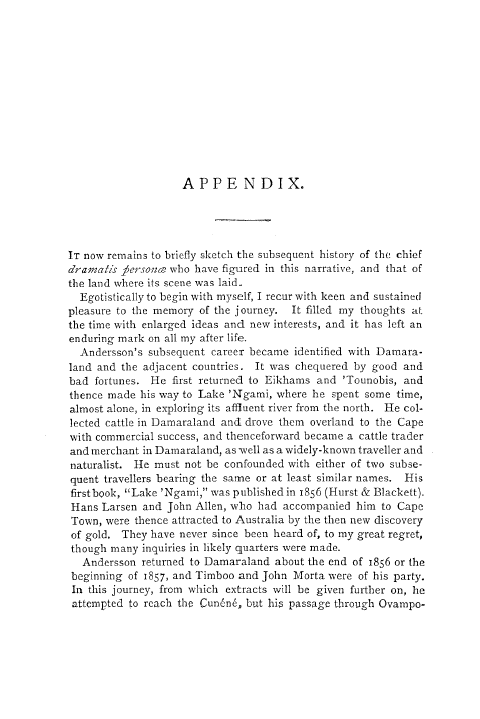APPENDIX.
IT now remains to briefly sketch the subsequent history of the chief dramatfs j5ersoius who have figured in this narrative, and that of the land where its scene was laid.
Egotistically to begin with myself, I recur with keen and sustained pleasure to the memory of the journey. It filled my thoughts at the time with enlarged ideas and new interests, and it has left an enduring mark on all my after life.
Andersson's subsequent career became identified with Damaraland and the adjacent countries. It was chequered by good and bad fortunes. He first returned to Eikhams and 'Tounobis, and thence made his way to Lake 'Ngami, where he spent some time, almost alone, in exploring its affluent river from the north. He collected cattle in Damaraland and drove them overland to the Cape with commercial success, and thenceforward became a cattle trader and merchant in Damaraland, as well as a widely-known traveller and naturalist. He must not be confounded with either of two subsequent travellers bearing the same or at least similar names. His first book, "Lake'Ngami," was published in 1856 (Hurst & Blackett). Hans Larsen and John Allen, who had accompanied him to Cape Town, were thence attracted to Australia by the then new discovery of gold. They have never since been heard of, to my great regret, though many inquiries in likely quarters were made.
Andersson returned to Damaraland about the end of 1856 or the beginning of 1857, and Timboo and John Morta were of his party. In this journey, from which extracts will be given further on, lie attempted to reach the Cun6n6, but his passage through Ovampo-

